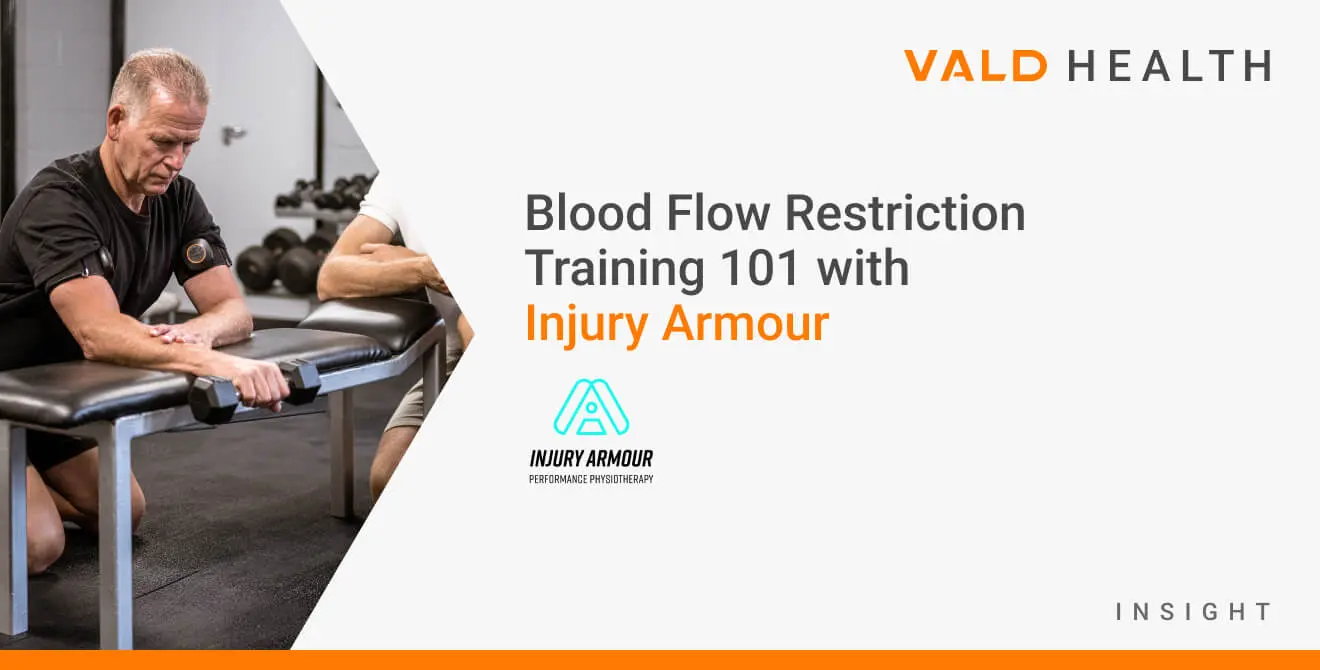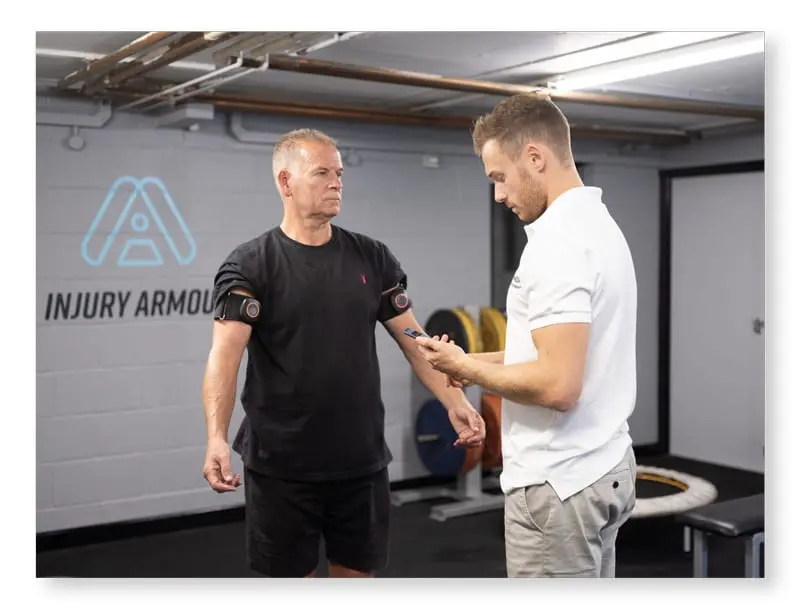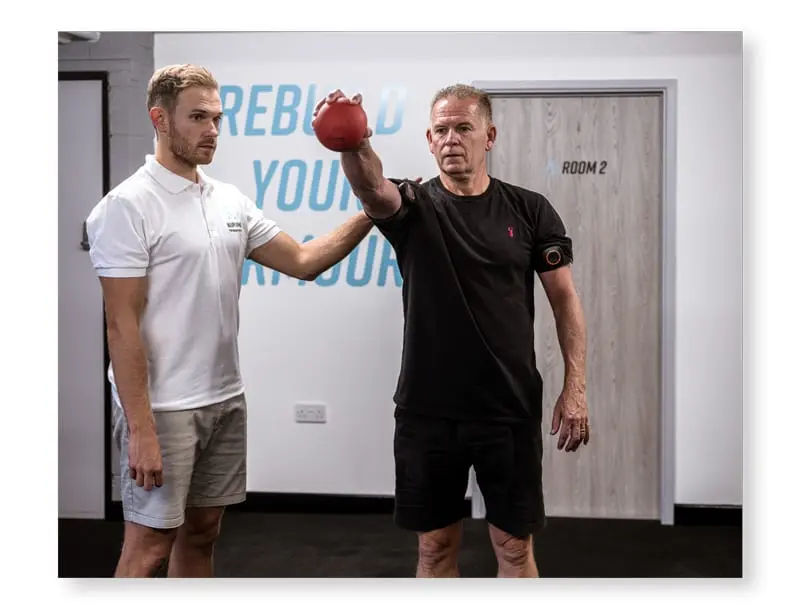Blood Flow Restriction Training 101 with Injury Armour
Available in:
EN
Originally posted to Injury Armour September 23 2020. Written by Adam Rutter.
Adam has a diverse background within Physiotherapy. Ranging from treating professional athletes to patients suffering with chronic pain. His area of expertise lies within tendon pain, long standing pain conditions and sports injuries. Adam’s excels in creating engaging and varying rehab programmes for all conditions to ensure your motivation remains high.
Blood flow restriction training (BFR), Occlusion therapy, Kaatsu training.
Completely new phrases, or a staple of your exercise routine?
Irrespective of your familiarity you may be asking yourself these questions.
Why are they training with tourniquets on their legs?
Is that just for Bodybuilders?
Is that not Dangerous?
Would you be interested if I told you that BFR training means you can achieve the same strength and muscle size results from lifting lightweights compared to lifting heavy?
This blog post today aims to clear up common misconceptions, including answering the above questions. I will touch upon the science but most importantly suggest how you can implement BFR into your lifestyle or rehab journey to accelerate your results.
Irrespective of your views on going to the gym or lifting weights, strength training is good for you. Period.
If you are athletic, suffer with osteoarthritis or are 99 years old you stand to benefit from performing resistance training to increase your strength.
Being stronger can aid athletic performance, control joint stresses, and improve your posture. Not to mention it is fundamental to help the 99-year-old out of the chair or up from the toilet.
The American College of Sports Medicine recommends that adults perform regular heavy load resistance training using external loads of 60-90 % of 1 repetition maximum to improve maximal strength gains (Garber et al., 2011).
However, some of you may find the thought of pushing yourself that close to your maximal capacity intimidating.
Although I actively encourage progressive strength programmes for all, research has shown that within the elderly populations’ heavy strength training results in high rates of programme dropouts due to joint flair ups and muscle aggravations (Liu and Latham., 2010).
Lifting close to your maximum may also not be advisable for people who need to prioritise tissue healing, or whose pain is a primary limiting factor.
Introducing: Blood Flow Restriction Training

Originating from Japan in the 1970s but more recently gaining traction in the medical community BFR was devised from self-experimentation.
After kneeling for hours on his haunches whilst praying, Dr Yoshiaki Sako found that he had achieved a muscular pump in his calf muscles comparable with performing multiple sets of calf raises.
What ensued was years of trial and error.
A deep vein thrombosis.
But critically some interesting findings of muscular development.
The technology and safety of the process have developed significantly since then, but the principle remains the same.
Research has shown that when performed effectively BFR training can elicit amazing results and can be an invaluable tool for multiple groups of people.
It has been shown that similar strength and muscular size benefits can be found by lifting 20% of your one-rep max weight with BFR compared to traditional strength regimes without BFR (80-95% 1RM) (Gronfeldt et al., 2020).
And it is not just strength improvements.
Light Cycling with BFR has shown to elicit a greater aerobic fitness response compared to light cycling without BFR (Silva et al., 2019)
When BFR training is performed, limb venous returned is purposefully reduced/ inhibited using a cuff.
With the limb occluded the physiological effect of the exercise changes slightly.
Because the limb blood flow is altered, and blood oxygen is limited it causes preferential recruitment of your stronger/ faster muscle fibre types.
This is alongside a cell swelling response.
When combined, the overall effect is one of increased growth hormone production and increased protein synthesis (Loenneke, J. P. et al., 2012)(Yasuda. T., 2008)(Fujita, S.,2008)
In simple terms, it places the muscle in a greater stress state for less effort. Catalysing the effects you would usually see from lifting heavier loads. This equals greater strength, aerobic fitness, and muscle size.
See the table below for an example of how the session format should be designed.
Strength Session Protocol

Aerobic Session Protocol

Why do Physios use it?
A large amount of Physiotherapy is about returning a client’s strength or advancing their strength beyond where it was preinjury/ surgery.
However, there are times in which lifting heavy weights is challenging due to pain, inflammation, and tissue healing.
This is where BFR is invaluable.
I can get a client stronger, faster and with less risk of them flaring up their pain as we can get great strength results with less load.
In fact, when compared to low load training alone BFR is preferential for patients recovering from ACL surgery and Osteoarthritis (Hughes et al., 2017a).
This is even more advantageous as BFR has been shown to work with exercises that can be performed very early postoperatively whilst still in bed (Kubota et al., 2011)(Gorgey et al., 2016).
This method is known as passive BFR and we will be releasing a video very soon to highlight how it Is best performed.
Additionally, BFR has been shown to decrease pain when exercising. Specifically, if you are suffering from Patellofemoral Pain Syndrome (Korakakis, Whiteley and Giakas, 2018). This may result in an increased range of exercises being available for you to perform, or returning to normal exercises sooner than you expected.

So, if we go back to those initial questions people may ask about BFR.
Why are you training with tourniquets on your legs/arms?
BFR allows for greater strength, size and aerobic fitness adaptations by lifting relatively light weights compared with traditional strength routines
Is it just for Bodybuilders?
Although this can be a great tool for bodybuilders, BFR training can be a useful tool for many different populations. Ultimately this exercise method best serves people who are either at risk of high load training/ cannot access heavy loads or want to vary their programming.
In short. Athletes, rehabbers, astronauts, and the elderly.
Is it Dangerous?
The safety of BFR has been extensively reviewed and has shown to provide no greater risk than heavy load training (Loenneke, J. P. et al., 2011; Loenneke, J. P. et al., 2014). Although for appropriate selection I would advise that you get in contact with a health professional who has experience of working with the modality as there are some screening questions to go through beforehand.
Watch this space for prescriptions of how to apply this form of training into your routine and how we use it to rehab clients.
References:
Available here.
Originally posted to Injury Armour September 23 2020. Written by Adam Rutter.
Adam has a diverse background within Physiotherapy. Ranging from treating professional athletes to patients suffering with chronic pain. His area of expertise lies within tendon pain, long standing pain conditions and sports injuries. Adam’s excels in creating engaging and varying rehab programmes for all conditions to ensure your motivation remains high.
Prior to setting up Injury Armour Adam has worked in professional football and with international athletes of varying sports- from Bobsled to Rowing. In addition he was the head Physiotherapist for The Western Storm supporting them to two Kia super league victories. Adam has also worked for the NHS as a specialist Physiotherapist within a complex clinic alongside working within Private practice.
